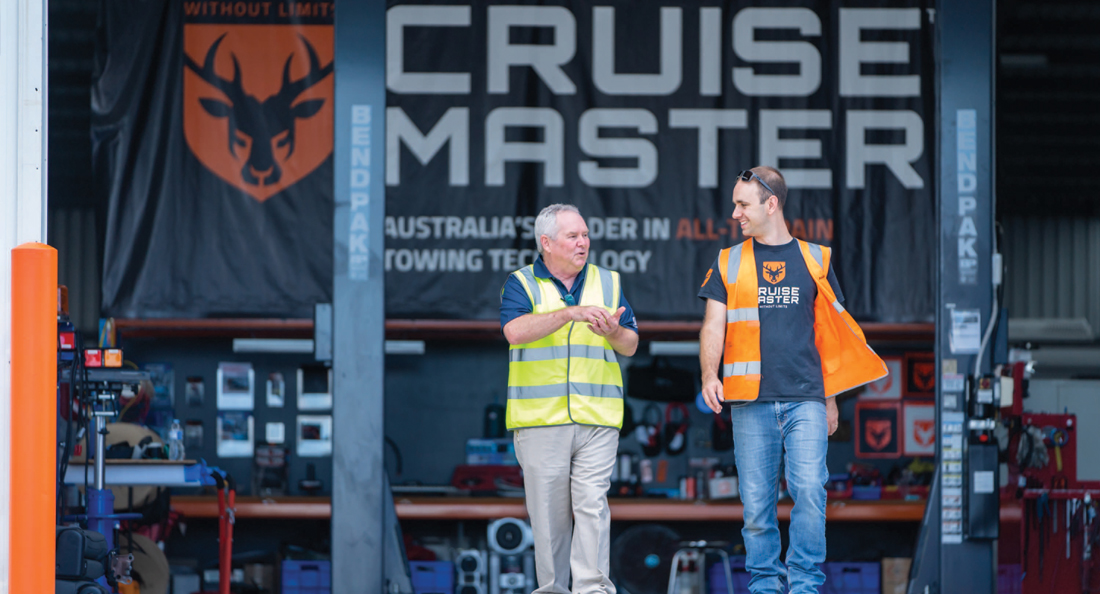The Australian manufacturing industry is looking ahead to restock for a new year, and part of this process is considering current and future challenges of warehousing and distribution, particularly when sourcing offshore product.
Mark Watson, Group Forecasting and Planning Manager for Motion Australia, weighs in on how to approach planning stock when the only thing certain is that nothing is for certain. He likens the forecasting and planning process to a Mike Tyson quote: “Everyone has a plan until they get smacked in the face.”
Watson furthers that forecasting and planning for procurement is more than managing demand and supply, more importantly it is working with variability of both.
“As many of our customers are small to medium sized businesses (SMEs), who are unlikely to be looking many months ahead for their requirements, the Motion planning group takes on that responsibility to create sourcing plans that often result in POs being placed more than 1yr in advance of when we think it will be selling.”
“We don’t expect our customers to approach us with a concrete plan in place, but any guidance from them is welcome as that helps us protect their own operations,” he continues. “When I am assisting customers that operate day-to-day without a formal logistics plan or a broader awareness of what their maintenance cycles look like, first and foremost it helps to approach things as though we have a common supply chain, and we are working together to create the best solution.”
Watson reiterates that he is always happy to work with suppliers and SMEs on developing procurement plans that suit their business needs and considers their assets.
“Managing uncertainty means constant firefighting to aim for perfect stock availability,” he says. “Which means developing very close relationships with our key premium suppliers to put ourselves in a good position for supporting our customers future needs.”
“As far as stock planning is concerned, our team at Motion Australia has quite a sophisticated method and system that works specifically on trying to manage the uncertainty of supply and demand,” he explains. “Our capabilities have been especially valuable in the last, say 10-12 months, where lead times and logistics have been incredibly variable.”
“In fact, some of our key suppliers now use the forecast and the flow that we provided them to try to get a better product allocation from their overseas plants,” he continues. “And that really demonstrates the credibility we have in the planning space.”
From a distribution perspective, Motion Australia has four major distribution centers across four states —Victoria, New South Wales, Queensland, and Western Australia– with over 100 branches across the country.
The benefit of this to customers is that they always have access to stock from those centers due to the continuous flow of stock that moves through the distribution centers to continuously replenish the branch locations.
Mark Dixon, Executive General Manager for Supply Chain and Logistics at Motion Australia has spent the last 25 years working in various roles across supply chain, manufacturing, and business improvement.
Currently, Dixon heads up Motion Australia’s distribution channels, ensuring products are in the right place at the right time —preferably a customer’s doorstep.
He notes the importance of optimising distribution networks, framed by the challenges of being an industrial solutions provider.
“Providing industrial solutions means we are working against the logistics process, which is slow moving by nature, so we need to be ready when a surprise order comes up,” he says. “It helps to have access to the broadest network of products regardless of where a customer may be situated — we have close to 100,000 unique SKUs in holding around the country out of an active catalogue of close to half a million SKUs.”
Depending on the location of a branch, it will be more tailored to fit the specific industries of the region.
“Our strong network of branches allows us to offer customers same day or next day delivery and keep stocked product close to the market,” Dixon explains. “If a product is not available at a branch, then we express freight from a distribution center or an alternate branch to meet our delivery promises.”
“Being a remote island location, Australia is often subject to long lead times from offshore manufacturers,” furthers Dixon. “Which is why it is key to have a strong planning and forecasting team to ensure we have optimal inventory levels, and the pipeline of inventory is well maintained.”
“This allows us to better assist our customers and serves us well in the instance of any local or global supply chain disruptions,” he adds.
Having a significant presence in the global market is another factor that keeps Motion Australia ahead of the competition, with access to thousands of suppliers including many high-volume premium suppliers.
“We work as closely as we can with our suppliers to provide constant feedback and insight into our forward requirements,” says Mark Watson. “Some of those suppliers then use that information to go fight for supply on our behalf.”
Watson highlights that the Motion Australia team really takes it upon themselves to pay forward the benefits of their supplier relationships to customers.
“With the constant shifts in supply chain and logistics happening not just domestically, but also globally, we encourage customers to keep in direct contact with our reps and our branches so that we can prepare our supply lines to support our customers future needs,” he concludes.
“The more we know about what our customers think the future might look like, the better we are able to support that future.”




